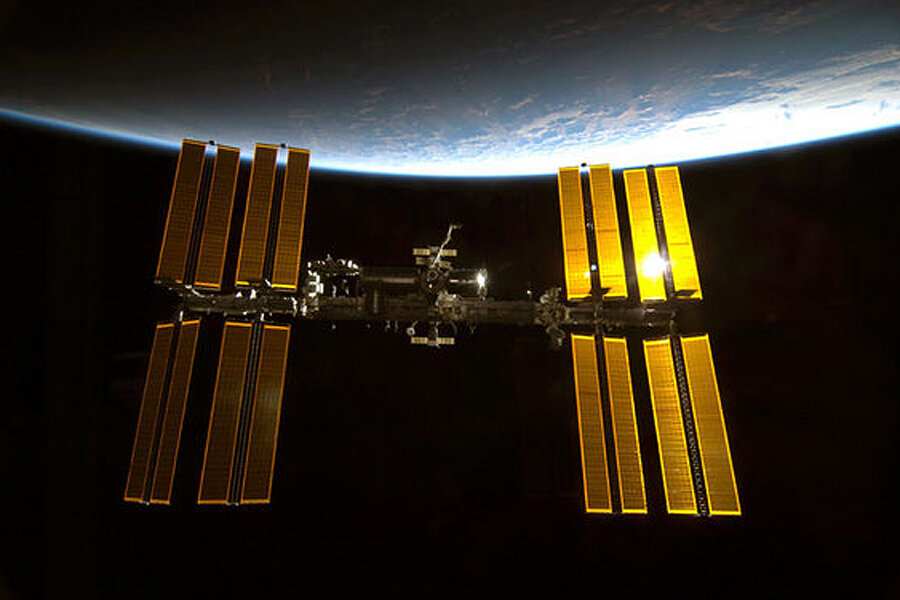Could US-Russia tensions leave astronauts stranded in orbit?
Loading...
Tensions between the United States and Russia are heightened, but that shouldn't affect operations on the International Space Station, NASA chief Charlie Bolden said today (March 4).
NASA's Mike Hopkins, Russia's Oleg Kotov and Sergey Ryazanskiy are scheduled to fly back to Earth aboard a Russian Soyuz spacecraft Monday (March 10). NASA officials are confident that the landing will not be affected by the current political climate, however. U.S. and Russian relations have been strained in recent days due to the ongoing situation in the Ukraine. Crews on the space station have weathered political situations like this one before, Bolden said.
"I think people lose track of the fact that we have occupied the International Space Station now for 13 consecutive years uninterrupted, and that has been through multiple international crises," Bolden said during a news conference. "I don't think it's an insignificant fact that we're starting to see a number of people with the idea that the International Space Station be nominated for the Nobel Peace Prize. It's not trivial. It has continued to exist and continued to function with people from a variety of cultures and beliefs, but we all are focused on the mission of the International Space Station." [See photos of the station's current crew]
Shortly after Hopkins, Kotov and Ryazanskiy land in Kazakhstan on March 10, three more crewmembers will launch to the station atop a Soyuz rocket. NASA astronaut Steve Swanson and cosmonauts Alexander Skvortsov and Oleg Artemyev, will depart Earth for their stints on the orbiting outpost on March 25.
Currently, Russia's Soyuz spacecraft are the only vehicles that ferry NASA astronauts to space and back. NASA officials hope to change that in the future by using private spacecraft currently under development in the United States today. The U.S. space agency's Commercial Crew Program is designed to foster the growth of private spaceflight systems that may take astronauts into low-Earth orbit sometime in the near future.
"Right now, everything is normal in our [NASA's] relationship with the Russians," Bolden said. "I'm not an historian… but over the duration of the human spaceflight program, particularly over the last 15 years since International Space Station has been on orbit, it's very important to understand that it started with a partnership between the United States and Russia. That partnership in space remains intact and normal. We are continuing to monitor the situation. Our crews continue to train in Star City [Russia]."
The space station has recently been granted a life extension until at least 2024. The $100 billion orbiting outpost is the largest manmade structure in space, and rotating crews of astronauts and cosmonauts have manned it since 2000. Five space agencies representing 15 different countries helped build the space laboratory.
Follow Miriam Kramer @mirikramer and Google+. Follow us @Spacedotcom, Facebook and Google+. Original article on Space.com.
- Cosmic Quiz: Do You Know the International Space Station?
- ISS Tour: Russian Segment & Soyuz Spacecraft | Video
- The International Space Station: Inside and Out (Infographic)
Copyright 2014 SPACE.com, a TechMediaNetwork company. All rights reserved. This material may not be published, broadcast, rewritten or redistributed.







